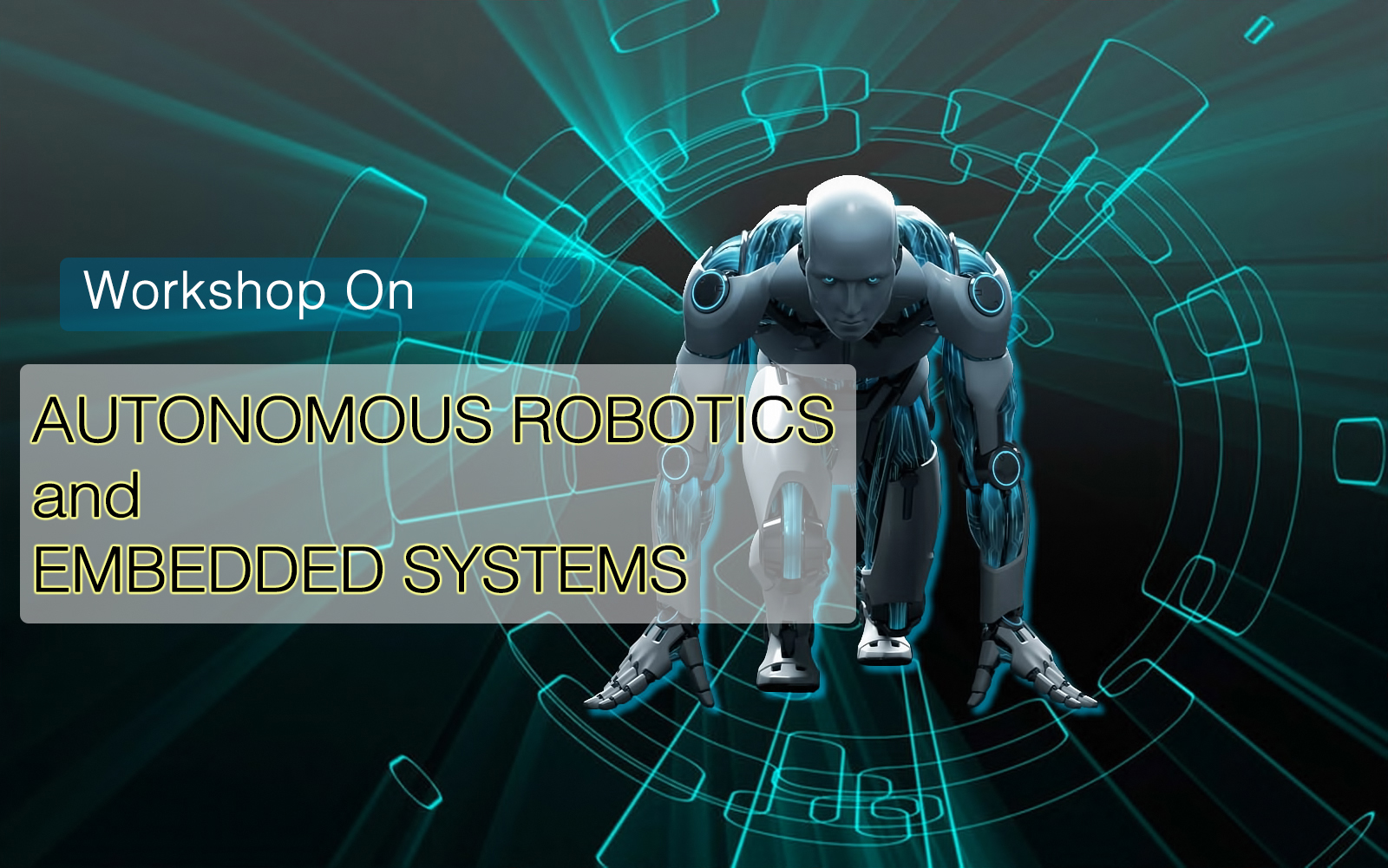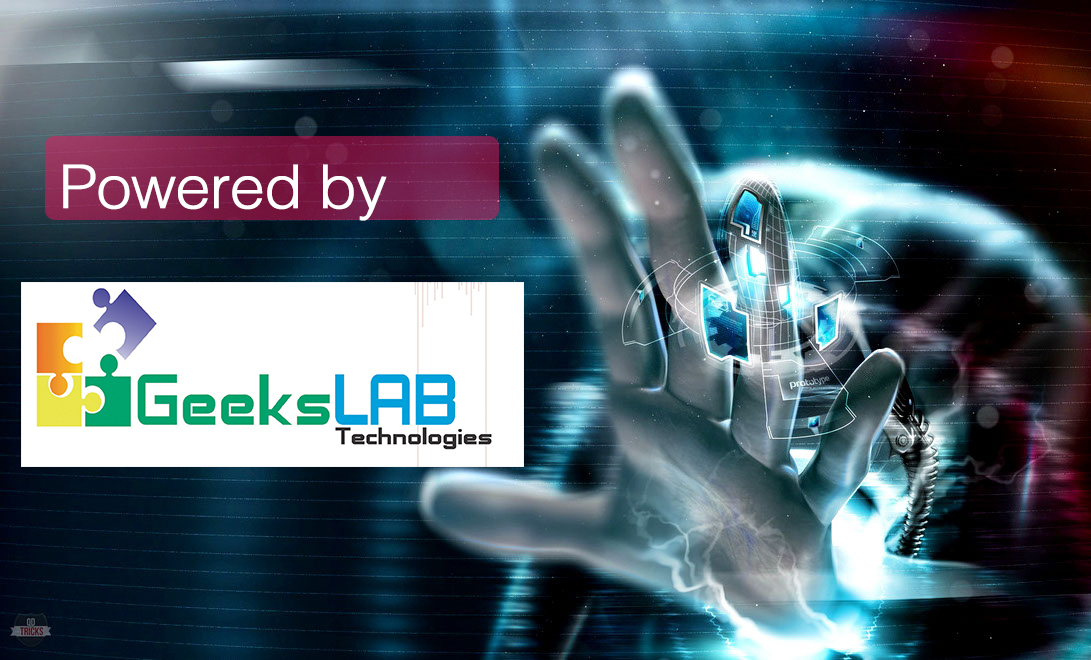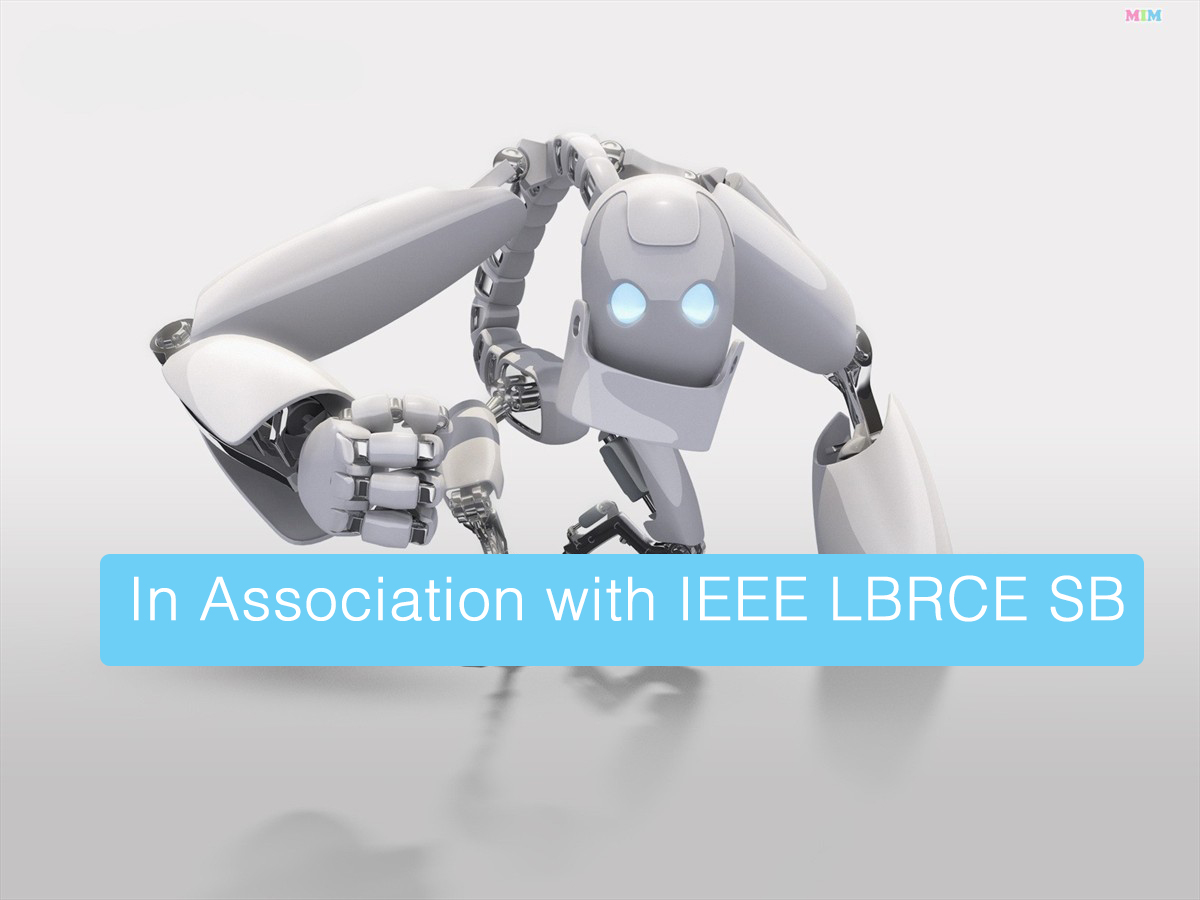




This conceptualized workshop has a technically updated curriculum which covers all basic and in-depth topics related to Embedded Systems and Autonomous Robotics. Students will learn the Robotics Engineering, Automation technology and get better understanding and grip on its application.
They will skilfully develop the all IR feed based Robots, learn Cellphone Control Robot and the technologies to make their Robots Wireless. They will be specialized to make animationon LEDs also. The workshop inculcates numerous hands-on sessions on designing, analysing & building circuits that form basic to advance building blocks for different robotics technology and Embedded system applications.





Date:: 5th and 6th of October
Duration :: 2 Day (16 hours)
** EACH TEAM MUST CONSIST OF 5 MEMBERS **



Session 1
Session 2
Session 3
Session 4
Introduction to Robotics and basics of robot construction
. Introduction
• Robots and Robotics
• Applications and market scenarios of Robotics
• Classification of Robots
• Basic Parts of a Robot
• Fundamental electrical concepts
• Discussion on how to utilise the things around us for making Robots
Mechanical System: Actuators & mechanism
• Different Actuators used in robotics
• Various types of Rotational Actuators
• Motors : Concepts & Characteristics
• Wheels and Drives
• Designing of body
• Kinematics and Dynamics of Robots
• Multi wheel mechanism
• Pick & Place mechanism
• Four-bar mechanism
• Suction mechanism
Electronics and Circuitries
• Revision of basic electronics fundamentals
• Bread boarding techniques
• Basic of design and fabrication of PCBs
• Study of simple RC circuits and ICs
• Power Supply Conversion using IC-7805 (9V to 5V)
• Interfacing of Motor Drivers (IC-L293)
• Motor Control Using H-Bridge Circuit
• Sensor: Basics and Selection of Sensor
• Designing and Interfacing of IR Sensors
• RF module
• Learn how to make your Robot Wireless
Microcontrollers
(The focus will be on the AVR series microcontroller. We will use ATMega, which is one of the most powerful and widely used 8 bit microcontrollers.)
• Basics of Microcontroller (MCU)
• Difference between microcontroller and microprocessor
• Microcontroller architecture and interfacing
• Use of microcontroller in our own circuits
• Introduction and features of AVR series MCU
• Functioning of in-build ADC
• Microcontroller Programming
• Configuring and using the I/O pins of the AVR Microcontroller
• Briefing about UART Communication
Software and Programming
• WinAVR
• Writing your First ‘C’ Program in AVR Studio
• Compilation and debugging
• Loading Compiled ‘C’ Program on a Microcontroller
• Motor Programming
• Sensor Programming
• LCD Programming
• LED's Programming
Animation on LEDs
• Simple Switch/LED based activities as making dancing LEDs
• Check program output on LEDs
• LCD: Concept, support, programming
Introduction to DTMF decoder ICs (Mobile phone Controlled Robot)
(It’s the time give control your Robots using cell phones. Here you can press mobile keypads & there your Robot will Actuates)
• What is DTMF?
• Interfacing of DTMF ICs
• Concept and Algorithms
• Testing of a DTMF Circuits
• Learn the mechanisms and programming of Mobile controlled Robot
Manual Controlled Robot
(It is also known as Operator-controlled Robot in which the movement and the drives of Robot can be control manually by Operator)
• Various Algorithms
• Mechanism of drives
• Need for Manual Controlled Robots
• Learn to make your own manual Controlled Robot
Designing of Line Tracker based Robots
(It is a well known robotics application where a Robot follows a black/white line upon black/white surface. It follows a line whose color is in contrast with the rest of the surface.)
• Line Tracking Robot Algorithms
• Need of these type of Robots
• Basic Fundamentals
• Industrial applications
• Hands on for designing and development of Line Tracking Robot
Designing of an Edge avoiding Robot:
(Edge avoiding is autonomous robot which never falls off the edge of a table. It has sensors, which can detect table surface or the end of edge. So, the mechanism never lets the bot fall off the table.)
• Edge Avoiding Robot Algorithm
• Basic fundamentals, mechanisms and programming
• Hands on for making your own Edge avoiding robot
Making Obstacle follower Robot
(Obstacle Follower Robot is autonomous robot which follows the obstacle of a particular colour. It detects the position of obstacle and can make out through its sensors the movement of the obstacle in 3d space)
• Obstacle Follower (sensing) Robot Algorithm
• Concepts, Mechanisms and programming
• Hands on for making your own Obstacle Follower robot
.png)
.png)
.png)
.png)



FEE
Rs 1000/-

Benefits to the participants
--Training Material (E-Book and softwares)
--Complimentary hardware Toolkit to each group of five participants.
--E-mail support after workshop
--Industrial projects guidance by the experts of the domain
--Authorized ‘Certificate of Participation’.
.jpg)
Note:
Per Participant
You Will Get These
HARDWARE TOOLKIT WILL BE GIVEN TO EACH TEAM (5 PARTICIPANTS)


1) Dr.S.V.Jagadeesh Chandra
Professor ,Dept....of ECE
2) Mr.G.Venkat Rao
Assoc.Prof,Dept....of ECE
3) Mr.Sashi Bhushan
Assoc.Prof,Dept....of ECE
Prof.B.Ramesh Reddy
HoD, Dept....of ECE, 9440990927
FACULTY COORDINATORS
1) Samuel Nickel
739658985
2) P.Shanthan Kumar Reddy
9492452849
STUDENT COORDINATORS

